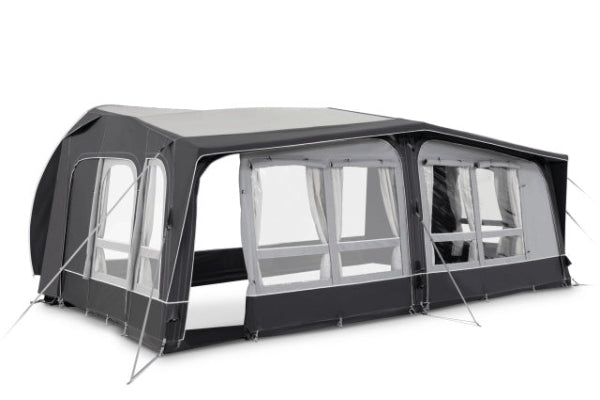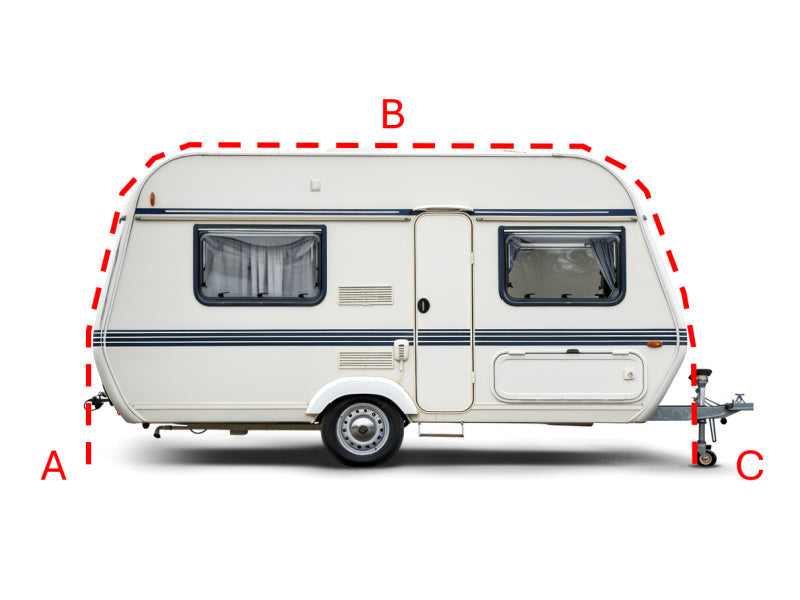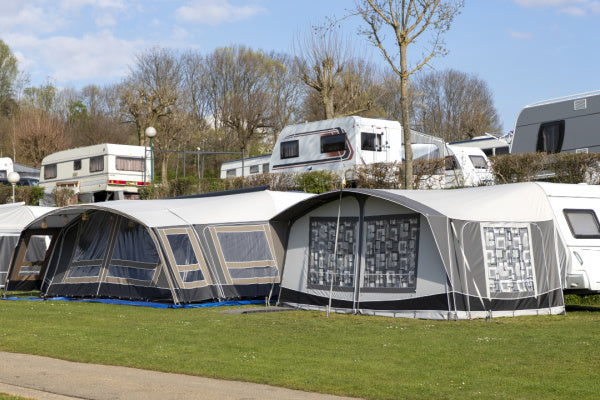How Do You Tie Down a Caravan Awning?
Ever watched your caravan awning flap like an enthusiastic flag at 3 am? Been there! To tie down caravan awnings properly, you'll need storm straps, sturdy pegs, and secure anchoring points installed at 45-degree angles. Master this essential skill to transform your flimsy fabric into a rock-solid outdoor haven—and actually get some sleep!
Securing Your Caravan Awning
Let's face it - a poorly secured awning isn't just annoying; it's dangerous. Wind can transform these protective shelters into expensive projectiles faster than you can say "storm warning."

The good news? Proper securing techniques turn that flimsy fabric into a rock-solid outdoor room. Think of it as building the foundations of a house - get this right, and everything else falls into place.
Essential Securing Techniques
Mastering the basics of awning security might seem daunting at first. Break it down into manageable steps, and suddenly it's as simple as brewing a cup of tea.
Using Pegs and Guy Lines
Pegs and guy lines aren't just accessories - they're your awning's best friends. Think of them as the roots of a tree, keeping everything stable no matter what the weather throws at it.
Start with the basics:
-
Drive pegs into the ground at a 45-degree angle, pointing away from the awning
-
Space them evenly around the perimeter, roughly two feet apart
-
Use longer pegs for soft ground, shorter ones for harder terrain
-
Keep guy lines taut but not overstretched
A loose guy line makes about as much sense as a chocolate teapot. Check the tension regularly, especially after rain or strong winds.
Tightening Straps and Buckles
Proper strap tension transforms a wobbly awning into a sturdy shelter. Think of it like tuning a guitar - too loose and it sounds terrible, too tight and something might snap.
Key steps for perfect tension:
-
Begin at the centre, working methodically outwards
-
Maintain even pressure across all straps
-
Double-check buckle security
-
Adjust tension throughout your stay
-
Consider upgrading to storm straps for extra peace of mind
Remember: Uneven tension leads to water pooling, fabric stress, and potentially costly repairs.

Checking for Loose Connections
That's where additional supports come in - think of them as insurance for your outdoor living space.
Must-have extras:
-
Support poles positioned strategically
-
Windbreaks placed to deflect gusts
-
Storm straps for exposed locations
-
Awning stabilisers for extra rigidity
-
Weather shields for harsh conditions
Pro tip: Set up additional supports before bad weather hits. It's much easier than rushing around in the rain.
A thorough connection check takes five minutes. Skipping it could cost hours of frustration later.
Essential check points:
-
Examine all fixing points thoroughly
-
Listen for rattling or movement
-
Look for wear marks on connection points
-
Tighten loose fittings immediately
-
Replace any damaged components
That rattling noise at 3 am? Usually a loose connection that could have been spotted earlier.
Using Additional Supports
Sometimes basic security isn't enough. Picture this: A peaceful camping morning shattered by the distinctive flapping of a loose awning in the breeze. Nobody wants their caravan awning performing an impromptu circus act. Tying down caravan awnings requires storm straps, robust pegs, and proper anchoring points. This comprehensive guide covers everything from basic tie-downs to advanced storm protection, ensuring your outdoor shelter stays exactly where it belongs.
Ground Considerations
The ground beneath your feet matters more than you might think. Different surfaces need different approaches for maximum stability.
Choosing the Right Pegs for Different Ground Types
Using the wrong pegs is like wearing flip-flops in the snow - technically possible, but asking for trouble.

Soft Ground/Grass: The most common surface needs careful consideration:
-
Choose pegs longer than 30cm
-
Look for broad-headed designs
-
Consider spiral pegs for extra grip
-
Avoid thin, straight pegs
-
Pack spares - soft ground can snap pegs
Hard/Rocky Ground: Rocky terrain presents unique challenges:
-
Use robust, shorter pegs
-
Look for reinforced heads that won't bend
-
Pack a proper mallet
-
Consider rock pegs with multiple fins
-
Keep spare pegs handy
Sandy/Loose Soil: Beach camping needs special attention:
-
Use broad sand pegs or plates
-
Double up on anchor points
-
Install screw-in sand anchors
-
Check stability frequently
-
Pack extra anchoring equipment
Smart campers carry multiple peg types. You never know when the perfect grassy pitch turns out to be hiding rocky soil.
Advanced Tips for Challenging Conditions:
Storm Protection:
-
Double up on guy lines during strong winds
-
Use additional storm straps
-
Position windbreaks strategically
-
Check weather forecasts regularly
-
Have an emergency takedown plan
Wet Weather Preparation:
-
Ensure proper awning tension to prevent water pooling
-
Create adequate runoff angles
-
Use waterproof covers on sensitive components
-
Keep spare dry pegs available
-
Monitor ground conditions for peg stability
Temperature Considerations:
-
Adjust tension in extreme heat or cold
-
Account for fabric expansion and contraction
-
Protect against UV damage
-
Monitor stress points regularly
-
Consider seasonal setup variations
Remember: Nature doesn't play by the rules. The best defense is thorough preparation and regular maintenance.
Maintenance Matters:
Regular Checks:
-
Inspect all components before each trip
-
Clean and dry equipment properly
-
Store securely between uses
-
Keep spares of essential items
-
Document any repairs needed
Seasonal Care:
-
Deep clean before long-term storage
-
Check for UV damage
-
Repair minor issues promptly
-
Update weather sealing annually
-
Replace worn components
Think of maintenance as an investment. A well-maintained awning lasts years longer than a neglected one.
With proper setup and maintenance, your caravan awning transforms from a potential headache into a reliable outdoor living space. Take time to master these techniques, and enjoy worry-free camping adventures for years to come.
Other content you might like:
- Caravan awning not rolling up straight
- Caravan awning not retracting
- Caravan awning not locking
- Caravan awning on hardstanding
- Caravan awning in high winds
- How to secure a caravan awning in high winds?
- When should I take my caravan awning down?
- How to stop caravan awning flapping?
- Why do some campsites say no awnings?





Leave a comment